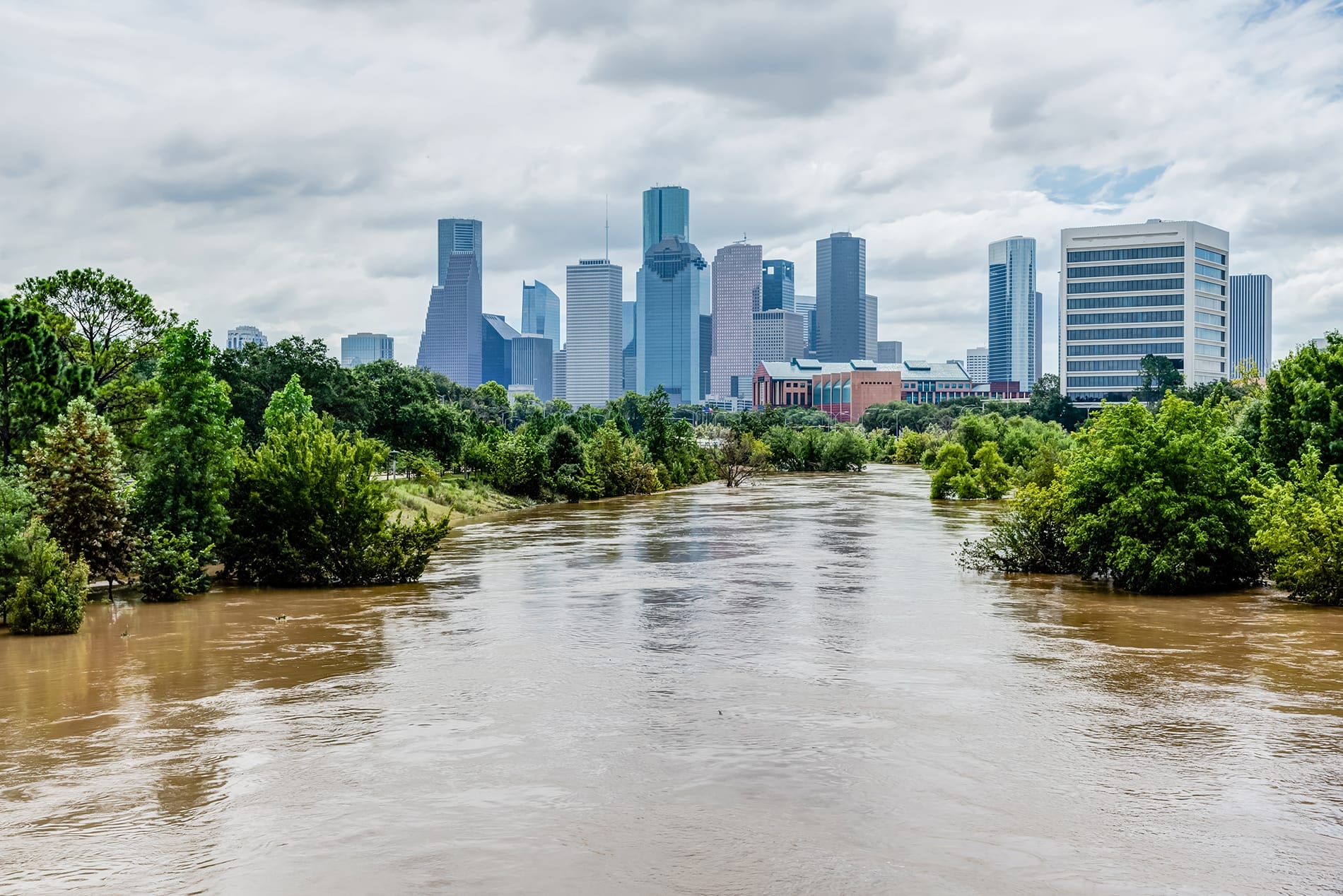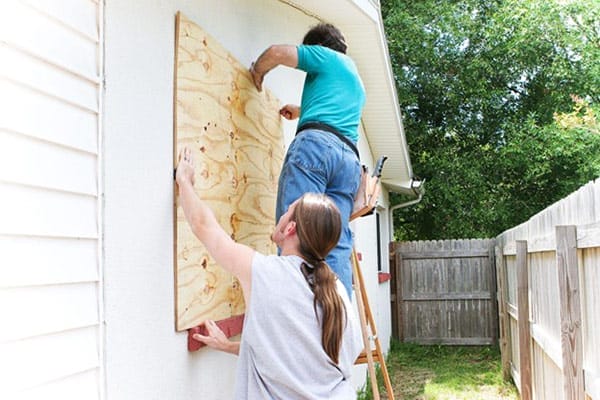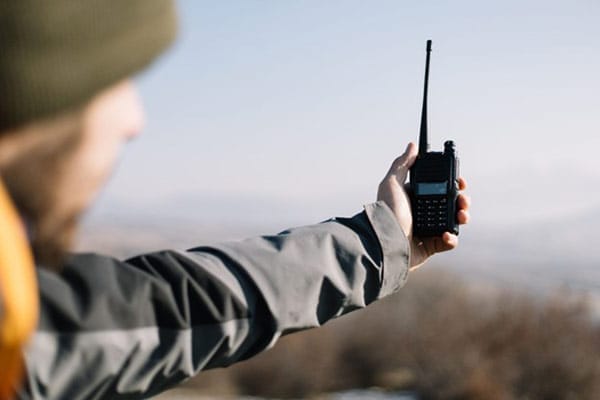Key Takeaways:
- A hurricane preparedness plan helps ensure the safety of your household, home, and pets.
- An emergency kit is a staple of hurricane preparedness and should include emergency supplies, such as a flashlight, first aid kit, and weather radio.
- Ensure you have enough non-perishable food and water to last 3-7 days.
Like other tropical cyclones, hurricanes are powerful and destructive forces of nature that can cause serious damage to communities and individuals. As such, it’s essential to learn how to prepare for a hurricane to protect yourself and your loved ones.
Below, we’ll explore the key steps in creating a comprehensive hurricane preparedness plan. We’ll explain the essential supplies you should gather, how to secure your home and property, communication strategies, protecting important documents, and much more.
What Are the Key Steps in Creating a Hurricane Preparedness Plan?
Comprehensive hurricane preparedness starts with assessing risks, developing an emergency communication plan, creating an evacuation strategy, and establishing a shelter plan. When these elements are in place, you can stay safe during a hurricane or tropical storm.
It’s also crucial to familiarize yourself with the types of hurricanes that typically affect your region, study historical patterns, and understand evacuation guidelines. All this information will help you make informed decisions during an emergency.
Create an emergency communication plan with your household members. Start by selecting a primary contact person responsible for relaying information to everyone in case of separation during a hurricane. You’ll also want alternative communication methods, such as two-way radios or satellite phones, as there could be power outages, and traditional communication channels and cellular networks may be disrupted.
Finally, you want to establish a shelter plan. Identify safe locations within your home or community and learn about local evacuation routes and nearby emergency shelters. Make sure everyone in your household knows the predefined meeting points in case of evacuation.
Helpful tip: If an active disaster occurs in your area, you can download the FEMA app to get a list of open shelters.
What Essential Supplies Should You Gather in Advance of a Hurricane?
A little prep can go a long way in the event of a hurricane. A good place to start is to have seven days’ worth of non-perishable food per person in your household. You’ll also want one daily gallon of clean drinking water per household member for at least three to seven days.
You should also have an emergency kit with a first-aid kit, medication, personal hygiene items, flashlights, extra batteries, bug spray, a battery-powered weather radio, important documents, two weeks’ worth of medications, cash, a manual can opener, and a basic tool kit. It’s also a good idea to keep a portable cellphone charger, extra clothing, blankets, and comfortable shoes readily available. Regularly check and update the supplies, ensuring you haven’t passed expiration dates.
If you have infants, elderly family members, or individuals with specific medical needs in your household, you’ll need to make special emergency plans. You’ll want specialty items like formula, diapers, and prescription medications for these family members.
Most of all, tailor your emergency supplies to the specific needs of your family members.
How Can You Secure Your Home and Property to Minimize Damage During a Hurricane?
Protecting yourself and your family is one part of knowing how to prepare for a hurricane, but you’ll need a home to return to after the storm has cleared. This is why securing your home and property is essential.
Kick off your household protection by inspecting the area around your home for potential hazards and addressing them. For example, trim trees and branches close to your house to prevent them from falling onto your home. You’ll also want to remove or secure loose outdoor objects, such as grills, lawn furniture, propane tanks, and other heavy outdoor items, so the wind doesn’t blow them into your home. It’s also a good idea to reinforce your garage doors from high winds with a hurricane brace.
Installing storm shutters can protect your home’s windows from debris blown by hurricane-force winds. So, if your home came with them or you had them added, always install them before a storm for added protection. If you don’t have storm shutters, board windows with at least 5/8-inch-thick exterior-grade plywood. You should also reinforce doors and windows with additional locks or hurricane braces to prevent them from being breached by strong winds.
Inspect your roof for loose or damaged shingles and repair any weak areas. Gutters and downspouts are often overlooked, but they help ensure proper drainage, which is critical in a hurricane’s heavy rains.
Property goes beyond just your home’s structure. You likely have valuables, such as jewelry or collectibles. It’s wise to move these valuable belongings to a safe place. You can place them in a safety deposit box at a bank or a heavy safe that flood waters, storm surge, or wind cannot damage or move.
Enter your ZIP Code and compare electricity rates
How Can I Find and Access Evacuation Routes and Shelters in the Local Area?
Knowing the evacuation routes and nearby shelters is a massive part of a successful hurricane evacuation plan. Get to know all the designated evacuation routes in your area and find alternate routes if the primary ones are congested or inaccessible. Also, keep up-to-date maps and GPS devices handy to navigate during an emergency.
While there’s no centralized database of all the nation’s evacuation routes, you can find these online if you search your city and state along with “evacuation” routes. If that doesn’t help, contact your state or local officials to find out where you can access this information.
Helpful tip: FEMA’s local search feature can help you find the correct local government offices to contact for this information.
Before a hurricane strikes, it’s important to stay informed about evacuation orders issued by local authorities through various channels, including television, radio, emergency management websites, and social media. Sign up for local emergency alert systems (including hurricane warnings) to receive real-time updates on your phone or through email.
Helpful tip: Learn more about NOAA Weather Radio from the National Weather Service.
If you cannot evacuate, the next option is to seek safe shelter nearby. Compile a list of emergency shelter locations near your home. Contact local authorities or visit their official websites for the most up-to-date information — the FEMA site can help you find the right office to contact.
Remember that many shelters may have specific requirements, such as registration or restrictions on certain items, so familiarize yourself with their guidelines in advance.
What Communication Strategies and Emergency Contacts Should You Establish Before a Hurricane?
Communication is vital in times of crisis, and establishing an effective communication strategy before a hurricane is essential for staying connected and informed. Write down all your emergency contact numbers and keep them readily available. Also, ensure everyone in your household has a copy of these numbers.
To help streamline mass communications among your entire household, consider using a group messaging app to stay in contact with family and friends during an emergency. Apps like WhatsApp and Facebook Messenger let you create group chats. In these group chats, you can share updates, offer assistance, and coordinate plans. You may also include contact information for your neighbors, local authorities, and utility companies.
Another key communication strategy is to designate a friend or relative outside the impacted area as a point of contact. Let this person know your evacuation plans and agree on a communication method. This person can relay information to other concerned family members or assist with coordinating aid if needed.
What Measures Can You Take to Protect Important Documents, Valuables, and Personal Belongings?
Knowing how to prepare for a hurricane means safeguarding important documents, valuables, and personal belongings. Gather essential documents like birth certificates, passports, insurance policies, medical records, and financial documents and store them in secure packaging, such as large waterproof bags. You may also want to consider making digital copies and storing them securely in password-protected cloud storage.
After securing the documents and making backups, if you choose to, find a secure location away from your home to keep them. This could be in a safety deposit box at a bank. You could also put them in a portable waterproof and fireproof container and bring them with you during an evacuation.
You should store valuables, sentimental items, and irreplaceable belongings in waterproof, impact-resistant, and fireproof containers or safes. If possible, place them in a high area to minimize the risk of water damage. If you’re leaving your valuables behind, you may want to choose a larger safe that’s difficult to move, preventing looters from taking the safe or from the water or wind sweeping it away.
You may also want to plan for the worst-case scenario by taking photos or videos of your property and belongings to give to your homeowners and flood insurance company in case of catastrophic wind or flood damage. This can serve as evidence if you need to file a claim for damages. Remember to keep these records in a safe place or store them digitally.
How Should You Prepare Your Vehicles for Possible Evacuation or Emergency Travel?
Depending on your family’s specific needs, you can do many things to prepare your vehicle for possible evacuation or emergency travel. However, some general hurricane vehicle preparedness tips apply to nearly anyone.
First, ensure your vehicle is in condition to handle emergency travel. This includes checking tire tread and inflation, brakes, fluids, spare tire or tire repair kit, and windshield wipers. If you or a repair facility find any issues, repair them before a storm hits.
During hurricane season, always keep your gas tank at least half full to avoid running low and bypass potential fuel shortages. Also, if there’s a hurricane watch in your area, it’s wise to fill the tank as soon as possible and avoid driving until you absolutely must.
You’ll also want to pack an emergency car kit. This kit should include basic hand tools, first aid supplies, jumper cables, blankets, and non-perishable food and water. You should also include a roadside emergency kit with reflective triangles, a flashlight, and flares in case you break down on the road.
Helpful tip: Keep your vehicle on higher ground and parked away from power lines, as these can fall during a hurricane.
What Steps Can Be Taken to Ensure the Safety and Well-Being of Pets During a Hurricane?
Hurricane safety isn’t just for human family members but also your pets. When preparing for a hurricane, consider the safety and well-being of your pets. Just like humans, ensure your pets have enough non-perishable food, water, and medication to last three to seven days and keep these supplies in waterproof and portable containers.
You should also assemble a pet emergency kit with essential items like a leash, collar with identification tags, pet carrier, litter, and sanitation items. It’s also a great idea to pack familiar toys or bedding so your pet is comfortable during this stressful time.
If you plan to head to a shelter, remember that not all are pet-friendly. If you want to find a pet-friendly shelter, get that info now for future reference. Call these shelters to find out what their vaccination and microchip requirements are for pets and complete them ASAP to avoid any issues. If it’s time to shelter because a storm is coming, call as early as possible to reserve a spot, as these pet-friendly shelters could fill up quickly.
Microchipping your pets is another wise decision before a storm strikes. If something should happen and you get separated from your pet during the commotion, this can help ensure you’re reunited once everything subsides.
If, for some reason, you cannot evacuate or you aren’t in an evacuation zone, it’s still important to bring your pets inside. Also, keep them away from windows or areas prone to flying debris. Provide a safe and secure space indoors where they can feel comfortable, and ensure all dog and cat doors are secured so they cannot sneak outside.
Most importantly, resist the urge to tranquilize your pet to help them relax. If they should get separated from you, the tranquilizer could negatively impact their survival instincts and result in harm.
Be Ready Before the Next Hurricane Strikes
Knowing how to prepare for a hurricane requires planning and proactive measures. Create a comprehensive plan, gather essential supplies and emergency kits, secure your home and property, find evacuation routes and nearby shelters, and establish a communication strategy.
If you’re in the Texas area, you already know hurricanes are a reality, and preparation is key. Being prepared takes time and effort, but it’ll be well worth it when a hurricane strikes and you can keep yourself and loved ones safe and sound.
Brought to you by energysavings.com
All images licensed from Adobe Stock.






